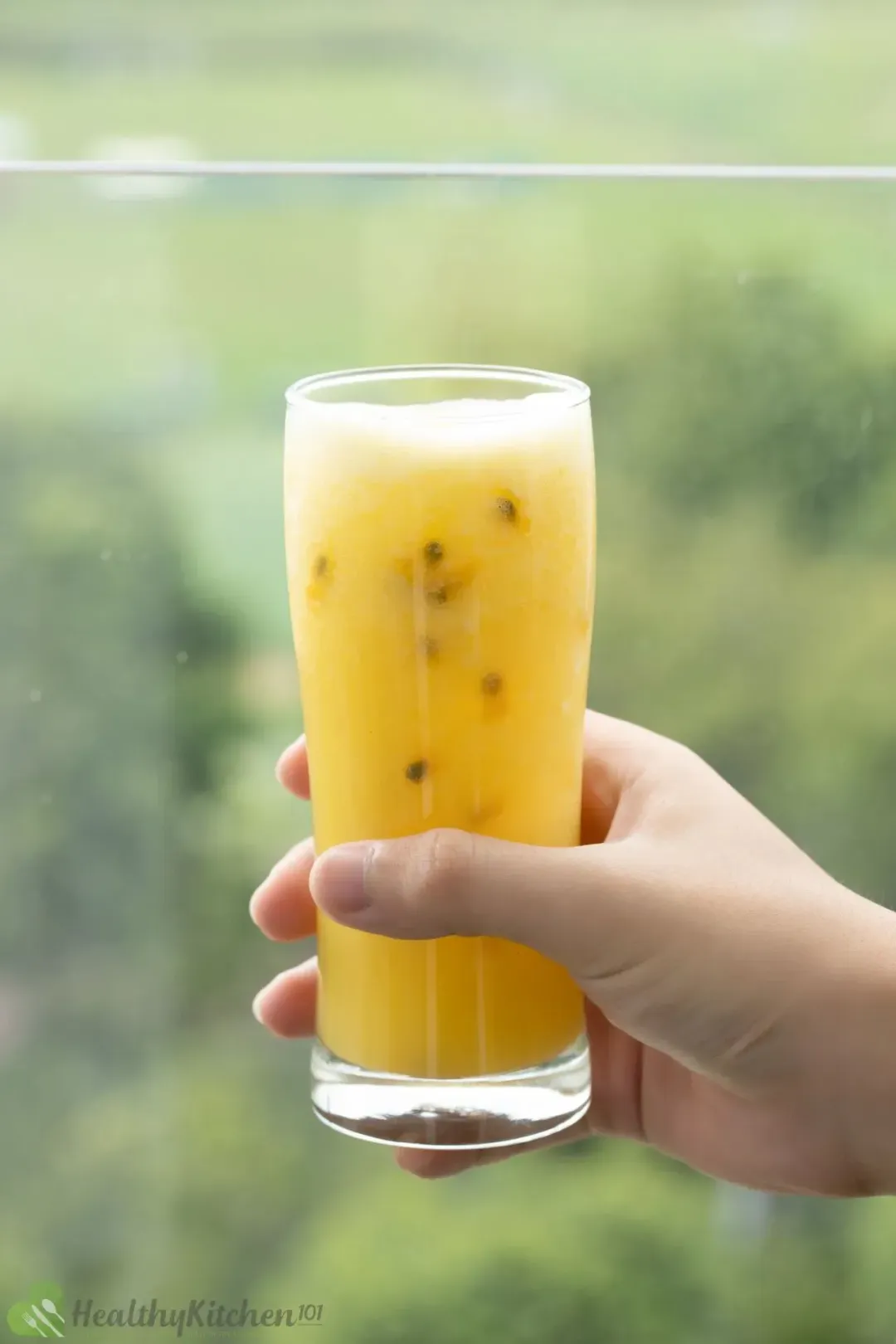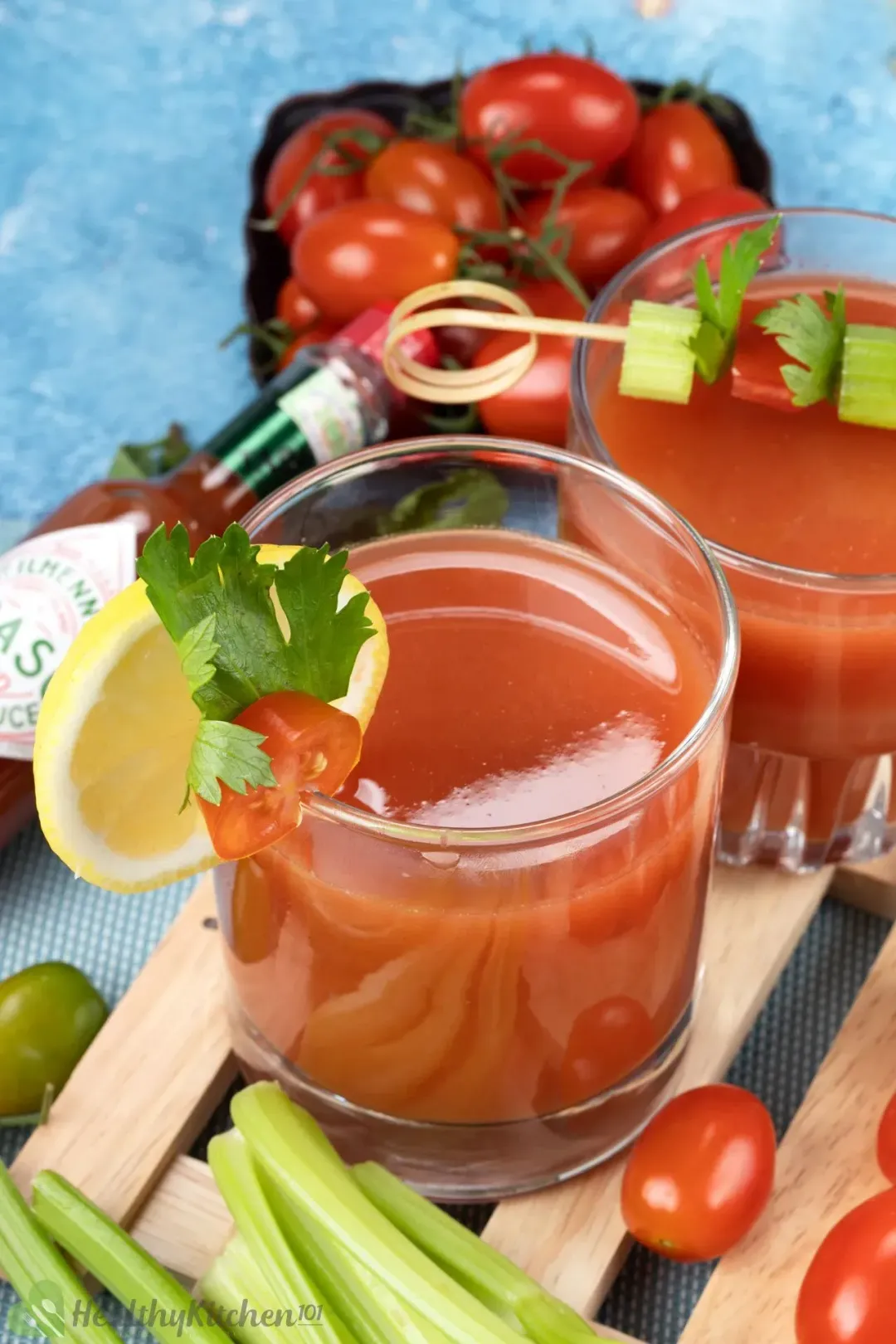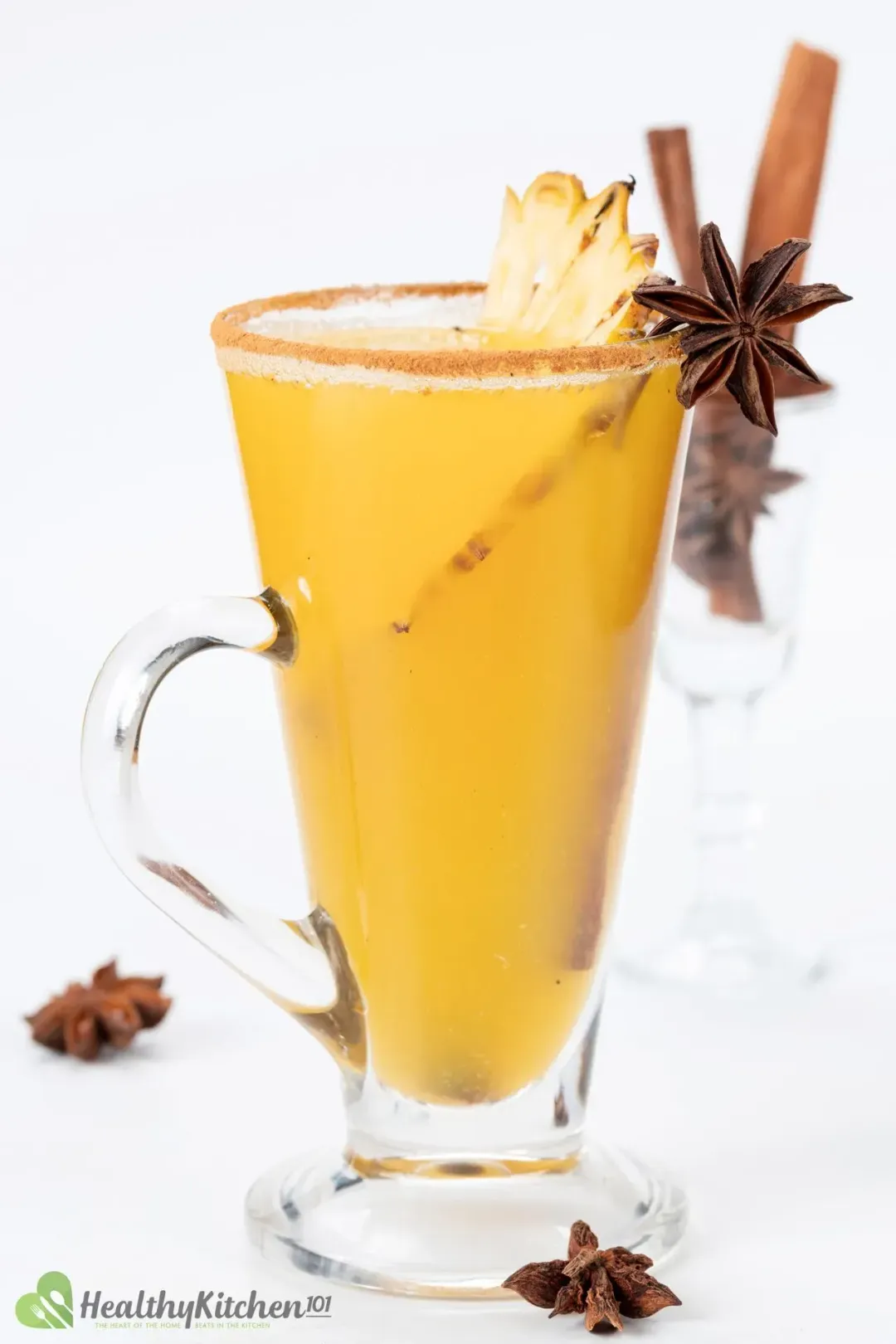This passion fruit mango juice recipe proves that you don’t need expensive equipment or advanced cooking skills to get a refreshing drink with lots of health benefits.
What Is Passion Fruit?
Passion fruit, aka passionfruit, is a small hard-outer casing fruit with a juicy interior and black seeds. The plant is native to South America— Brazil and Paraguay but now is grown in tropical countries throughout the world.
The flavor of passion fruit is tropical tangy when the fruit is fresh. When ripens, it becomes sweeter and the flesh is jelly-like which can be scooped out and easily eaten with a spoon.
The black seeds offer nice crunchiness and are relatively tasteless so you don’t need to remove them. The same goes for the white tiny seeds sometimes you may see in the shell. They are soft, spongy, and perfectly edible.
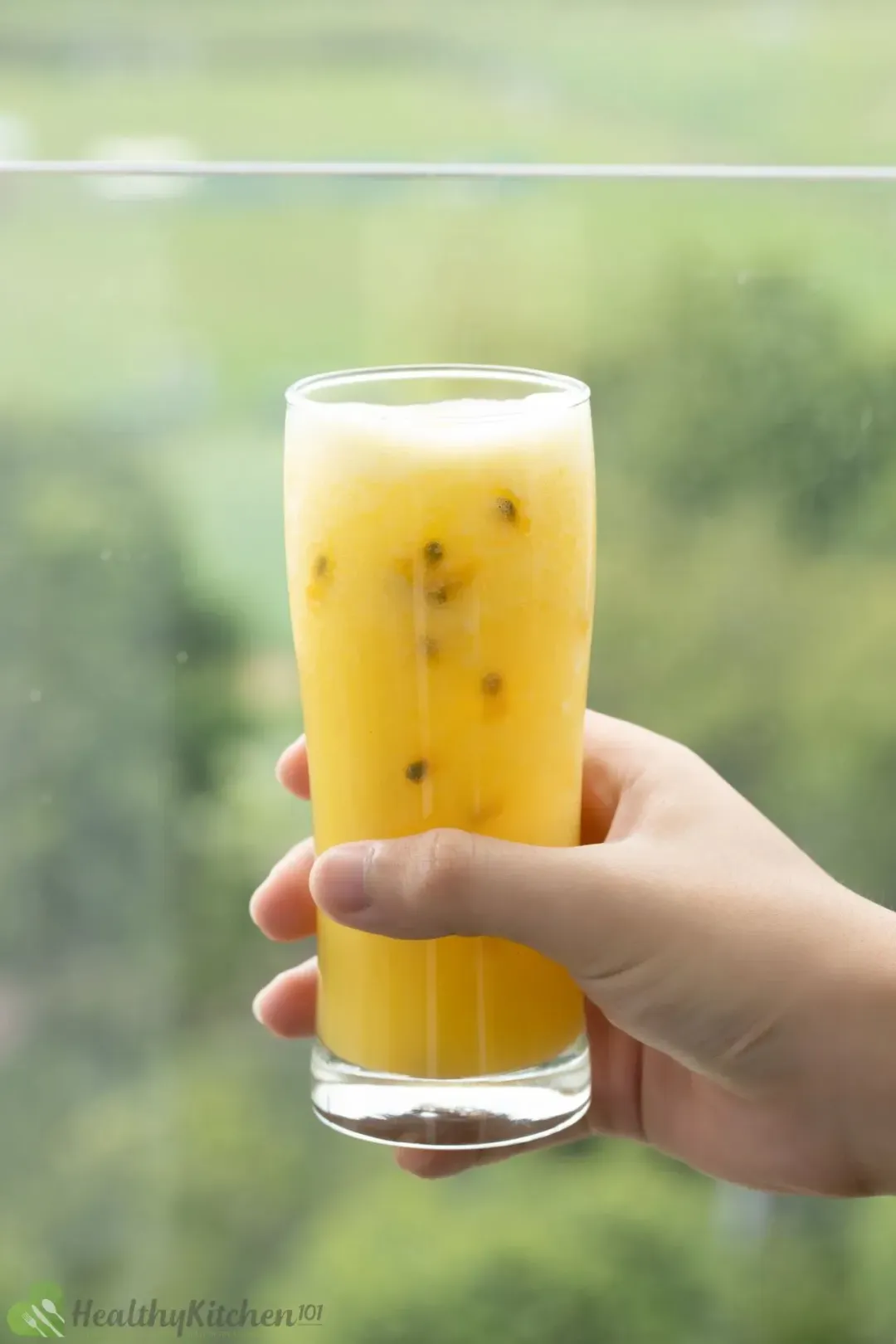
The genus passion fruit is one of the richest in fruit varieties with more than 60 different types, from yellow, sweet to banana passion fruit.
- Purple passion fruit: originating in Southern Brazil and Northern Argentina, purple is the most popular type of passion fruit (about 80% of the world’s production). The purple passion fruit has a rich flavor with less acidity than its yellow counterpart.
- Yellow passion fruit: suitable for coastal lowlands, this variety is bigger than the purple form. Speaking of flavor, yellow passion fruit is juicy and relatively acidic.
- Giant passion fruit: this form is less common than others because it requires a tropical climate and only grows best 1700 above sea level. The giant type has a slightly tart taste that is perfect for desserts and beverages.
- Banana passion fruit: the name speaks for itself, banana passion fruit looks like a small banana with rounded ends. It tastes like the common purple type but with a slight hint of banana.
In this recipe, we choose the purple produce for its strong sweet-sour flavor and a pleasant aroma.
Is Passion Fruit Mango Juice Good for You?
Passion fruit, the star of this juice, is not only delicious as juice but also contains some certain nutrients. Below are the most significant benefits:
- Rich in antioxidants: this tropical fruit contains various antioxidants, particularly vitamin C, beta carotene, and polyphenols. They play an important role in supporting your immune system and eyesight.
- Great source of dietary fiber: fiber is essential for a healthy diet because it keeps the digestive system function properly and helps the weight loss process.
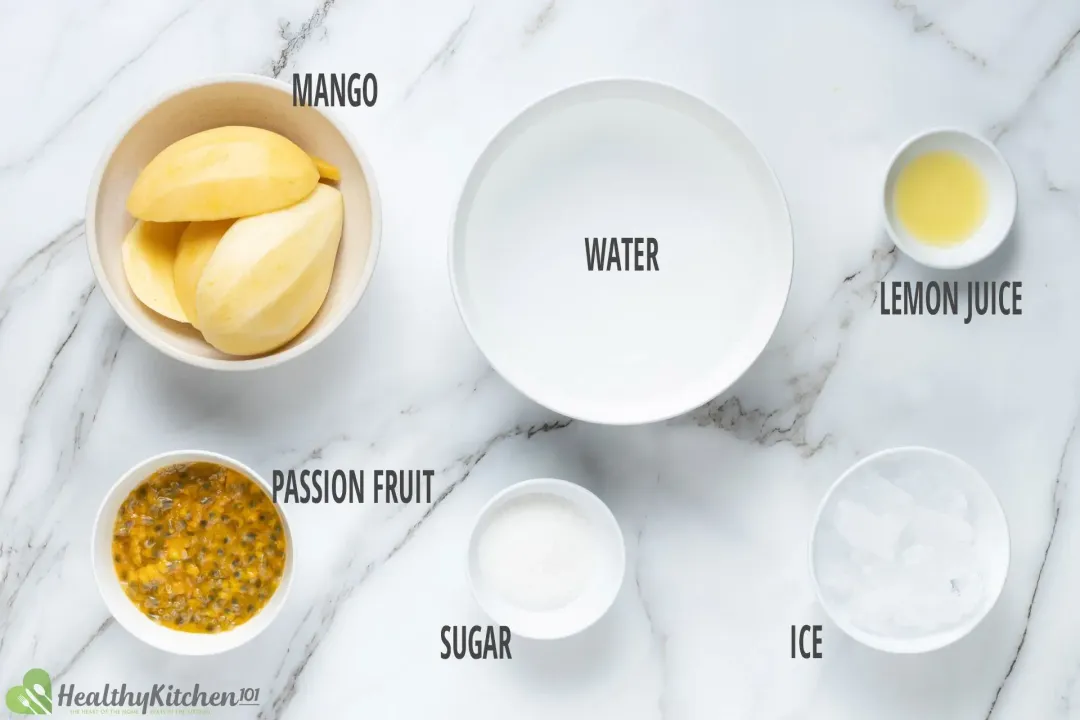
The same goes for mango, the “king fruits” in Asian, South America, and Indian cultures due to its goodness and health benefits.
- Improve skin health: one cup of mango provides up to 75% of the recommended vitamin C intake. This vital micronutrient promotes collagen production which potentially helps thicken the dermis and protect skin cells from the damage of UV exposure.
- Improve blood sugar regulation: mango contains magnesium and potassium link to lower blood pressure and supports the cardiovascular system.
How to Juice Mango and Passion Fruit
The flesh of the mango is different from other juicing fruits. This fruit vesicle is mushy so that a juicer can yield very little liquid from it.
The best way to juice mango is to shred mango flesh into small pieces, blend them with a little water in a food processor, and strain the pulp out through a fine strainer.
As for passion fruit, juicing is another lovely way to eat the fruit since many people don’t enjoy the appearance of black seeds.
To get most of the liquid from passion fruit, scoop all the flesh and the seeds into the blender. You can also add a little water in case the mixture is too dense to blend.
A small tip is to blend at the slowest degradation rate so that the pulp can extract as much as possible while the seeds don’t disintegrate. The final step is to pour the liquid through a fine-mesh sieve over a glass jar.
If you fancy this recipe, you may also love our passion fruit juice.
How Long Does It Last?
A juice shelf life usually depends on the temperature it is exposed to. At room temperature, passion fruit mango juice can last for about 6 hours.
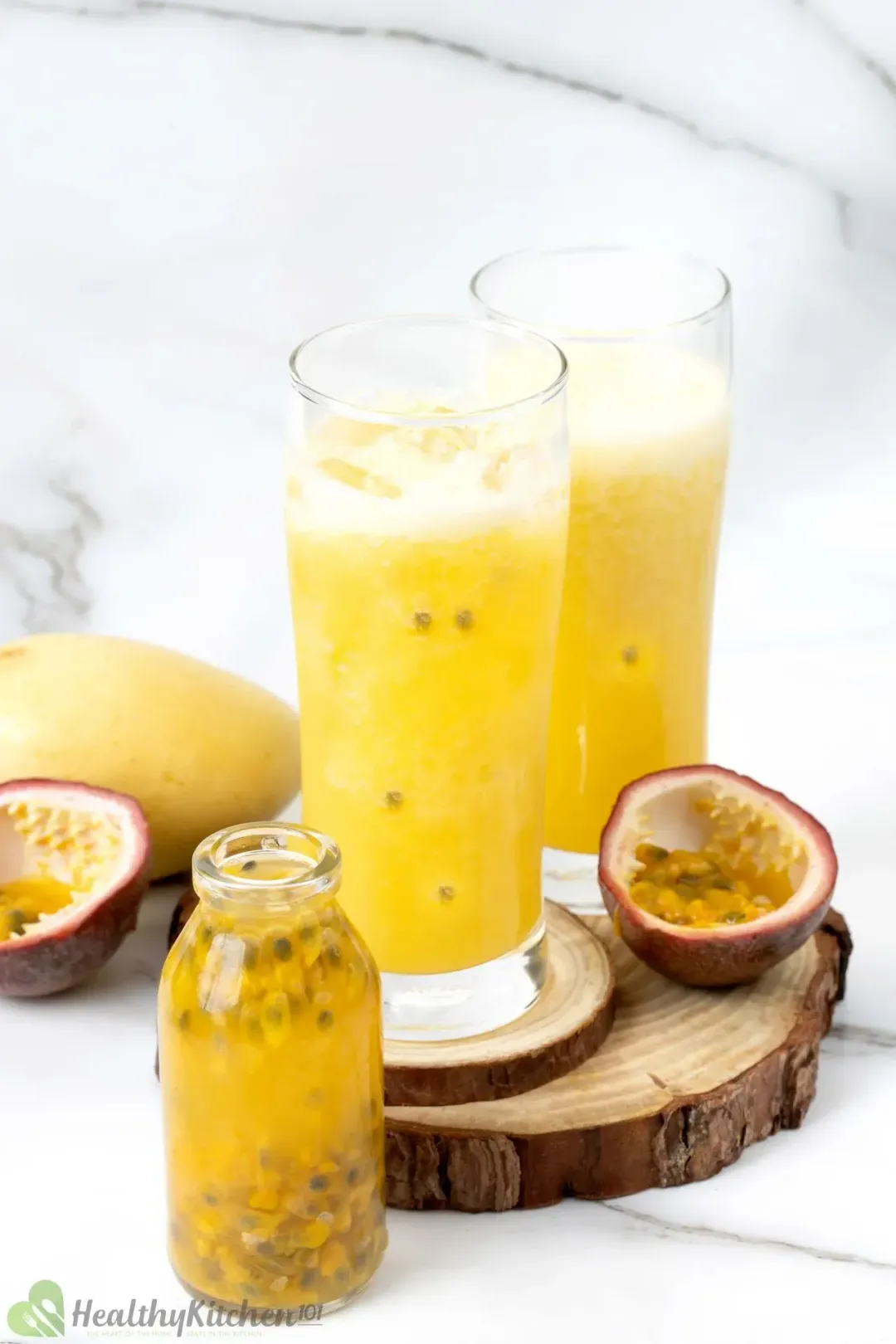
If kept in the fridge, the homemade juice can stay fresh for up to 3 days without any changes in taste and quality.
Can You Freeze It?
Freezing fresh fruit is not a bad idea if you want to make big batches for the week. Simply keep the juice in an airtight container and place it in the freezer. This way your drink can last for up to 3 months.
When ready to use, let your juice defrost at room temperature and taste for flavor before using.
If you are in the mood for more mango juice recipes, visit our mango round-up for some simple and healthy options. Or check out this delicious juice compilation for more tasty drinks.
Passion Fruit Mango Juice Recipe
Requiring only 15 minutes to make, this passion fruit mango juice recipe is easy and tasty enough to stay on your favorite juice list.
- prep TIME 10 mins
- total TIME 10 mins
- COURSE Beverage
- CUISINE American
- SERVINGS servings
- CALORIES 130 kcal
INGREDIENTS
- 12 oz mango
- 6 oz passion fruit
- 3 tbsp sugar (optional)
- 3 cups water
- 1 tbsp lime juice
INSTRUCTIONS
Place 12 oz mango slices and 3 cup water in a blender. Mix until smooth.
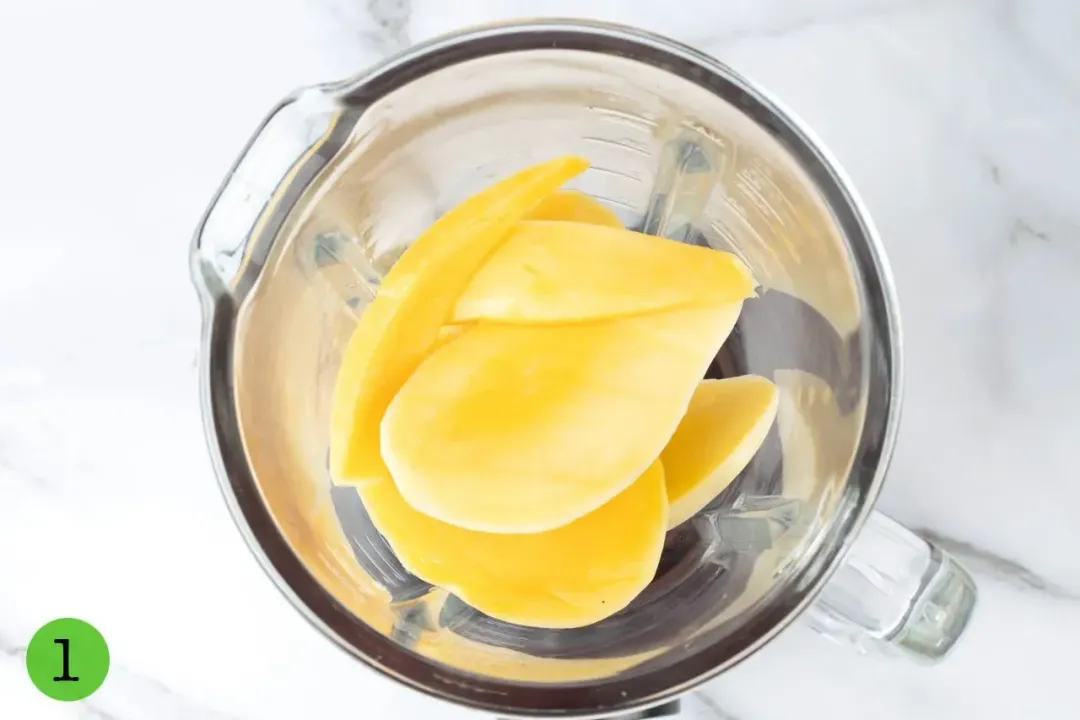
Strain mango through a fine sieve. Add sugar to your taste but no more than 3 tbsp, 1 tbsp lime juice, and 6 oz passion fruit into the juice mixture.
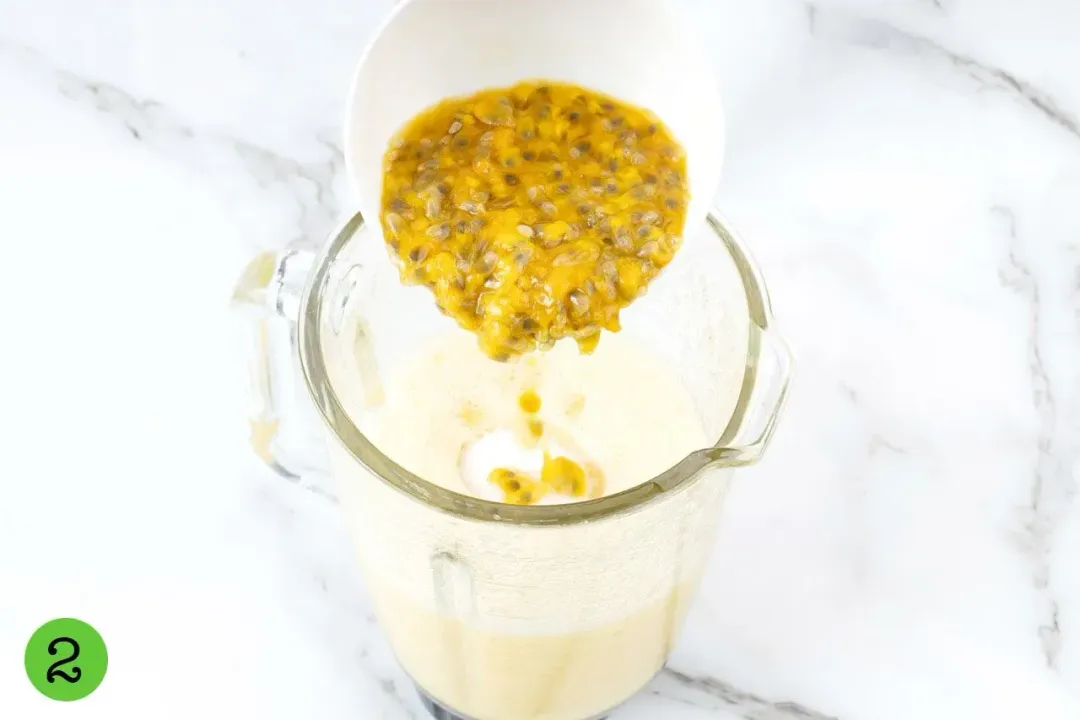
Serve.
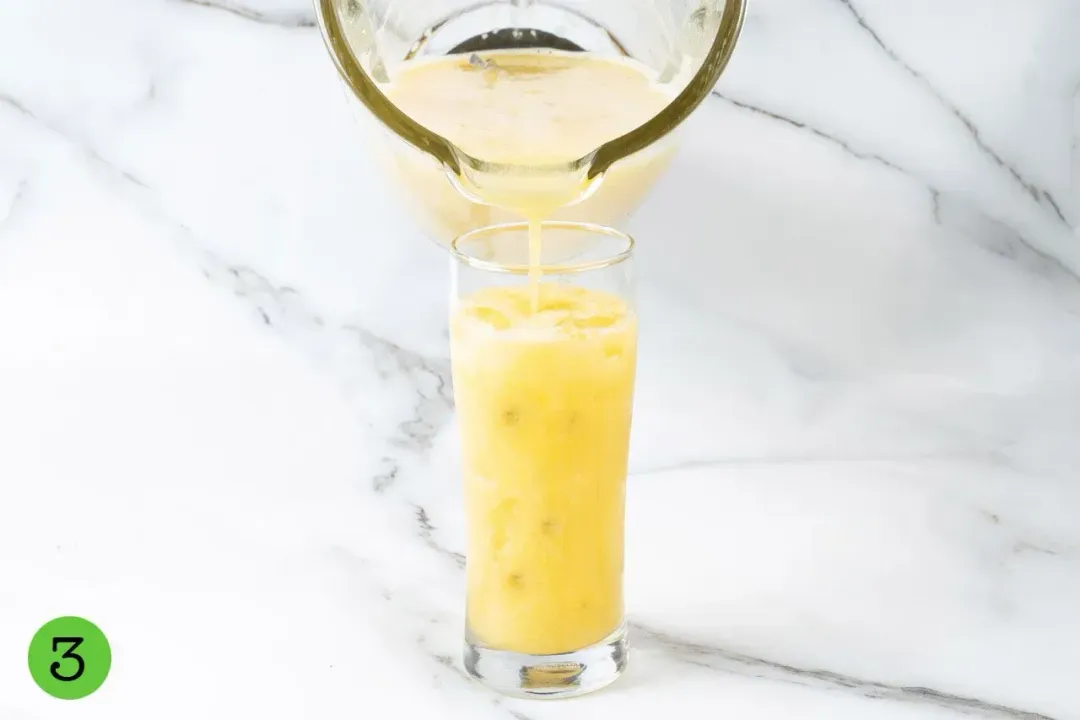
NUTRITION
Tuyet Pham
Head Chef, Culinary ConsultantLuna Regina
Writer, Author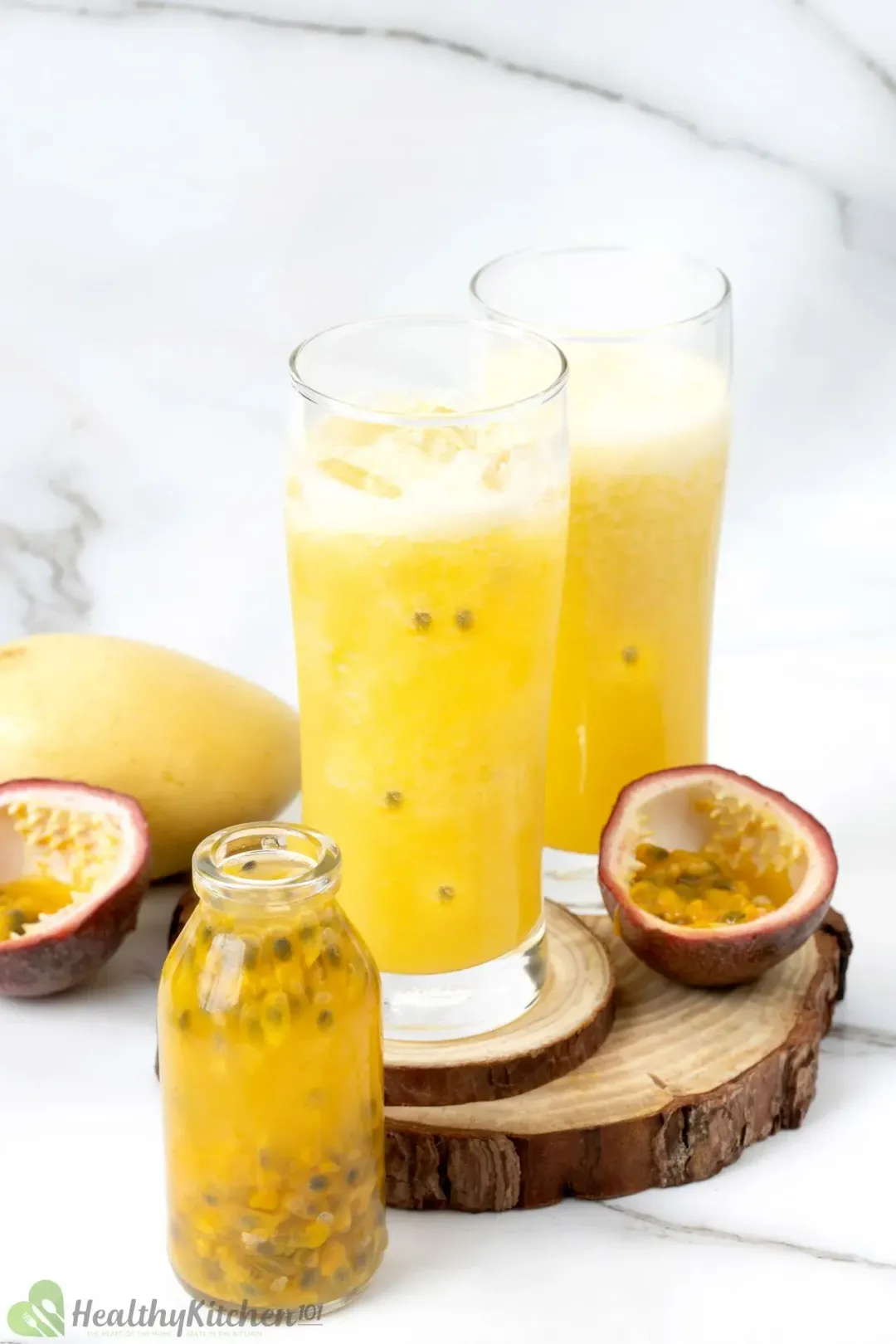
- Angela MeaderVery easy and tasty juice.
